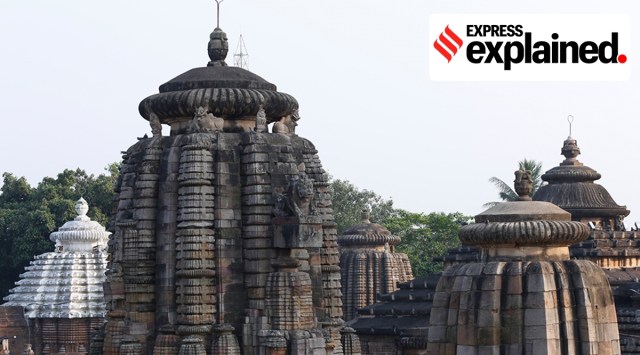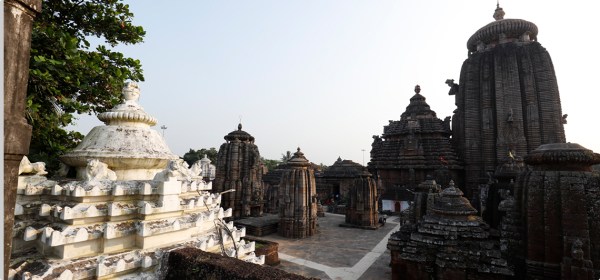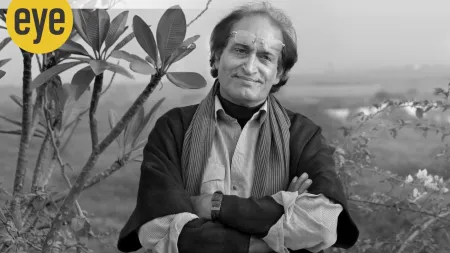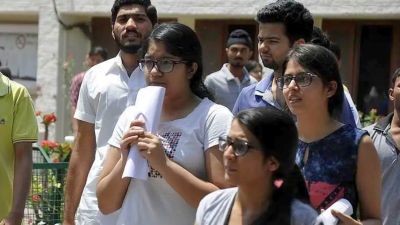- India
- International
Explained: Why Centre has opposed Odisha’s plans for landmark Lingaraj Temple
The Ministry of Home Affairs has said several sections of the proposed ordinance are in conflict with the Ancient Monuments and Archaeological Sites and Remains Act
 Lingaraj temple, the largest in Bhubaneswar, was constructed by King Jajati Keshari in the 10th century and completed by King Lalatendu Keshari in the 11th century (Odisha Tourism)
Lingaraj temple, the largest in Bhubaneswar, was constructed by King Jajati Keshari in the 10th century and completed by King Lalatendu Keshari in the 11th century (Odisha Tourism)The Central government has told the Odisha government that its ordinance to bring the 11th-century Lingaraj temple in Bhubaneswar and its associated temples under a special law is outside the legislative competence of the state legislature. It also said the ordinance is in conflict with the rules laid down under the Ancient Monuments and Archaeological Sites and Remains Act, 1958 (AMASR Act).
🗞️ Subscribe Now: Get Express Premium to access the best Election reporting and analysis 🗞️
What is the Lingaraj Temple Ordinance, 2020?
Lingaraj temple, the largest in Bhubaneswar, was constructed by King Jajati Keshari in the 10th Century and completed by King Lalatendu Keshari in the 11th Century.
In December 2019, the Odisha Government had announced a development plan for the temple and its peripheral area in Bhubaneshwar. The 66-acre “Ekamra Kshetra” development plan was launched to preserve the heritage and development of the nine sites and their nearby areas at a cost of around Rs 700 crore.
The first phase of the project includes outer access road development, Lingaraj entry plaza, Bindusagar revival plan, parking space, heritage complex, development of amenities for Kedar Gouri- Mukteswar complex, e-auto project, relocation project and a state-of-the-art interpretation centre.

The Lingaraj Temple Ordinance of 2020 was introduced to manage the rituals and other activities of the temple and eight other associated temples. This was intended to be on similar lines of the special Act which manages the affairs of the Jagannath temple in Puri, one of the four dhams in India. At present, the Lingaraj temple is being governed under the Odisha Hindu Religious Endowment Act.
The ordinance proposed the formation of Lingaraj Temple Managing Committee with a full-time administrator looking after day-to-day affairs of the shrine. Under the Act, a fund creation was proposed to deposit income derived from immovable and movable properties of the temple. The temple has around 1,500 acres in various parts of the state and the land in most of the places are under encroachment.
Introducing the ordinance, state Finance Minister Niranjan Pujari had said, “A special law for management of the Shri Lingaraj Temple will ensure its better functioning, quality facilities to the pilgrims, devotees and worshipers. It will also empower the committee to safeguard the properties of the ancient temple.”
The ordinance was passed by the state cabinet on December 15, 2020. The ordinance vested the management of the temple in a 15-member committee that will administer the temple and its properties including temples outside the premises and mathas. Since the Assembly was not in session, the new law was proposed to be enacted through an ordinance.
 In a letter to the Odisha Governor, the ministry has pointed out that the state government has already violated the AMASR Act around Lingaraj temple by building modern structures (Odisha Tourism)
In a letter to the Odisha Governor, the ministry has pointed out that the state government has already violated the AMASR Act around Lingaraj temple by building modern structures (Odisha Tourism)
Why has the Centre opposed the ordinance?
The Ministry of Home Affairs has said several sections of the proposed ordinance were in conflict with the Ancient Monuments and Archaeological Sites and Remains (AMASR) Act. The AMASR Act provides for preservation of ancient and historical monuments and archaeological sites and remains of national importance.
In a letter to the Odisha Governor’s office, the ministry has pointed out that the state government has already violated the AMASR Act around Lingaraj temple by building modern structures.
The ministry contended that since the ordinance covers 12 centrally protected monuments including the Lingaraj temple and three tanks, it was outside the legislative competence of the state legislature as it violates the provisions of AMASR Act, 1958. The ministry has further said that an independent Act vesting administrative powers to a managing committee, thus facilitating dual administrative authorities will result in conflict.
Specifying certain points of contention, the ministry pointed out that clause 15(2) of the Odisha ordinance has a provision for retail shops for sale of commodities inside or outside of the temples. But as per AMASR Act a monument should not be used for any other purposes not consistent with its character.
Similarly, as per clause 17(3) of the Odisha ordinance, the managing committee will oversee the lease or sale of movable or immovable property attached with the Lingaraj temple. But the ministry contended that movable property may include archaeological or artistic object (meaning antiques) and in that case, it will be in conflict with the AMASR Act, 1958.
Under clause 22(2d) of the ordinance which provides for certain powers to the temple committee to undertake repairs, for which the Archaeological Survey of India is responsible. Therefore, this clause is also in contradiction with the provision of the AMASR Act, 1958, the ministry said.
Another clause which facilitates special darshan on payment of a fee was also found in violation of the existing agreement between ASI and temple management; which clearly stipulates the public would have free access to the monument.
The ordinance also provides for repair and construction of new buildings while the centre contended that constructions can only be allowed by the National Monuments Authority.
Newsletter | Click to get the day’s best explainers in your inbox
More Explained
EXPRESS OPINION
May 05: Latest News
- 01
- 02
- 03
- 04
- 05








































